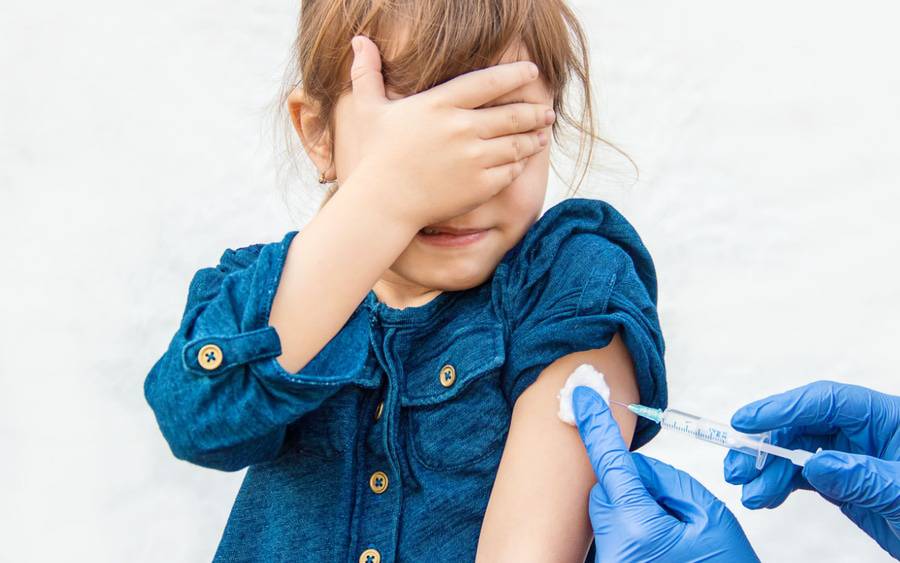7 Ways to Help Overcome Your Child’s Fear of Shots
1. Prepare them according to age
A 2- or 3-year-old is usually best told immediately before or during the visit. Say something simple in a positive tone:
“You will get some shots today. They are little pokes that might hurt for a minute, but mommy or daddy will be here to help you to be brave. You need them to keep you healthy, so you don’t get sick.”
A child 4 years or older may benefit from a little more advance preparation — maybe a day or two before. Explain that they have a doctor’s appointment coming up, where they will likely be getting some vaccinations (or “shots”). Please try not to promise your child ahead of time that there won’t be any “shots,” as the vaccination schedules do change from time to time.
Explain why they need vaccinations as children at this age do start to have some more rational thinking. For example, you might say:
“We will be seeing your doctor in a few days for your check-up. You will need to get some shots that day. Vaccine shots are special medicines that will help you to stay healthy. Most children need some shots before they start kindergarten. They do hurt, but only for a short time. I will help you to be brave. You will be OK.”
You may want to have them practice breathing and relaxing their arm muscles at home, so on shot day, you can remind them that you practiced this, and they know what to do.
2. Distraction: Give your child something else to think about
During the actual time of vaccination, most children do best if they do not see the needle or are somehow distracted.
Having them actively involved in some quiet activity can help keep their mind off the pain. Some ideas include singing a song, telling jokes, blowing on a pinwheel, or looking at something engrossing on a screen. You can also remind them to keep breathing and to try to relax their muscles.
There are new devices available that can help children feel less anxious and in pain when getting shots. Two popular options are Buzzy and ShotBlocker. These devices are safe to use and can be combined with other methods to help kids feel more comfortable. Ask your child's doctor about these devices and how they can help.
Buzzy uses cold and vibration to numb the skin and distract the brain from the needle sensation.
ShotBlocker reduces injection pain by applying pressure. It is a plastic disk with small points and a hole for injections. Placing it near the injection site blocks pain signals from reaching the brain, making injections less painful.
3. Speed: Complete the shots, then provide comfort
Sometimes the event is too stressful for successful distraction, but at least the ordeal can be quick. Many children, at the completion of their vaccine shots, will say something like “It’s over?” or “That’s it?”
“Their fear and anxiety about the event are often greater than the pain of the shots,” explains Dr. Rubin. “When a few vaccinations are to be given at once, it is best to get them all completed as quickly as possible, and then comfort the child at the end.”
4. Reward: Celebrate the milestone
The sting of the booster shots can be lessened somewhat by a reward, celebrating the completion of this important childhood milestone. Something that a child can share with their parent can be fun — enjoying a food treat like ice cream or going to the park for the afternoon.
A prize that is too exorbitant may make the child more fearful of their shots, thinking “It must be really bad if daddy says he will buy me a new bike for getting my shots.”
5. Parental attitude check: Stay cool, calm and collected
Try to have a calm, unapologetic, but warm attitude with your child. If one parent is needle-phobic, then perhaps the other parent can accompany the child. If the child has special needs or is very sensitive, then perhaps both parents, or one parent and another support person, could come along.
Remember, the vaccines are for your child’s benefit and improved health.
6. Topical medicine: Numb the location beforehand
An over-the-counter topical numbing cream or gel containing lidocaine can help to slightly reduce the pain of vaccination on the surface of the skin. The cream needs to be applied in the appropriate location 30-60 minutes before the vaccination to be the most effective.
Since many of the vaccinations must be injected deeper into the muscle, topical creams do not block out all pain. However, some families and children do seem to benefit from using them.
7. Oral pain medicine: Help alleviate soreness
A dose of ibuprofen (Advil) or acetaminophen (Tylenol) can help a child with some of the soreness (or fevers) they may experience after their vaccinations. It is best not to pretreat your child with oral pain medication, as those medications may reduce the immune response from the vaccine.
So again, the best timing for a dose of oral pain medication is usually a few hours after the shot, and the medication can be continued for up to 48 hours if needed. Please discuss the dosing of these medications at your child’s visit.
